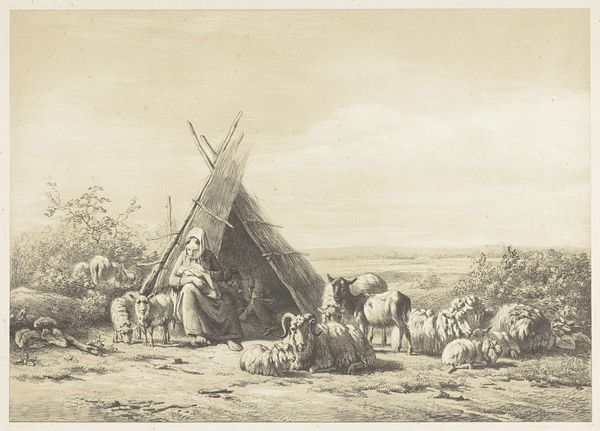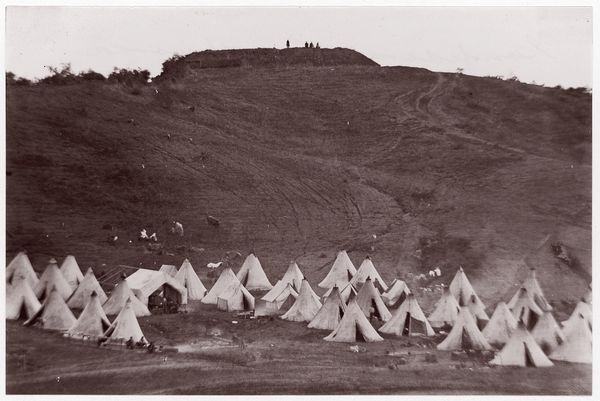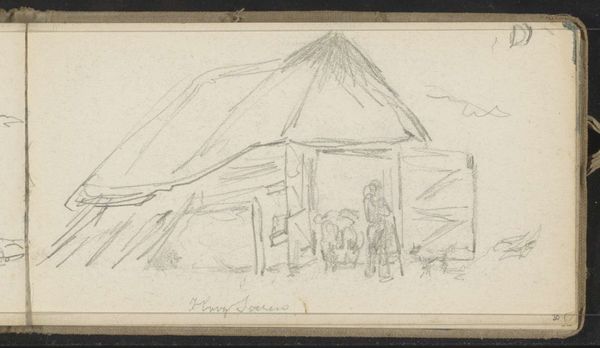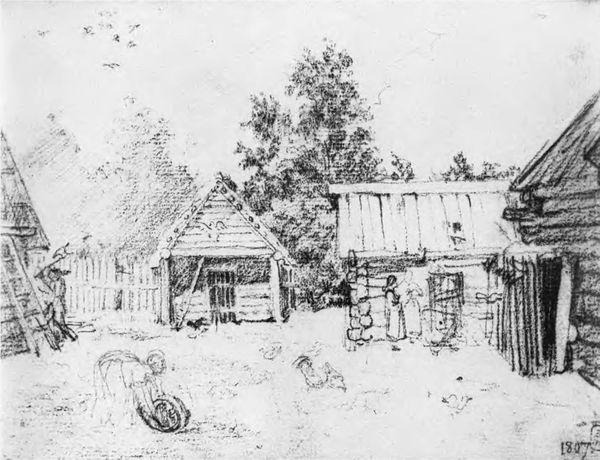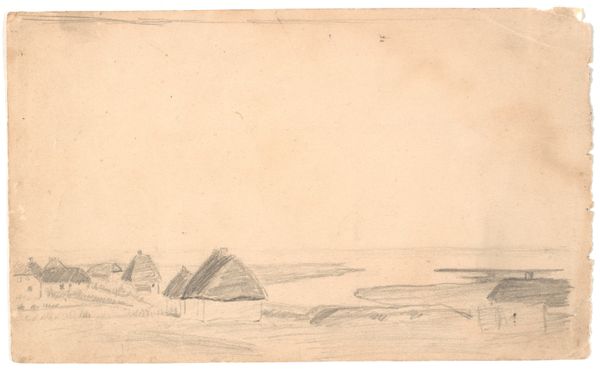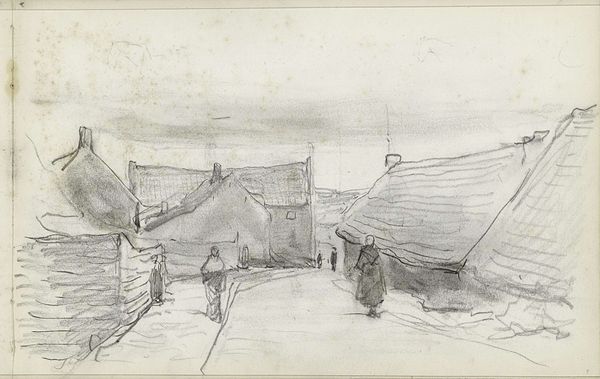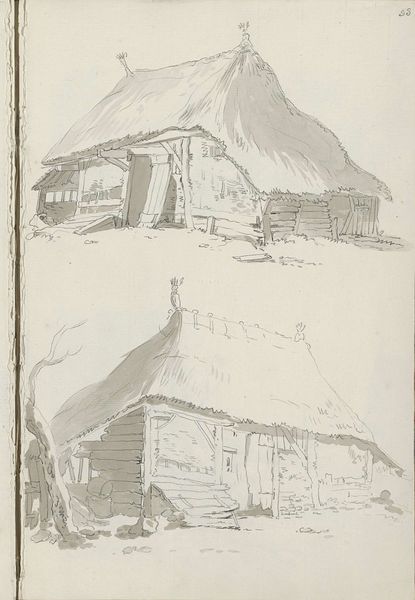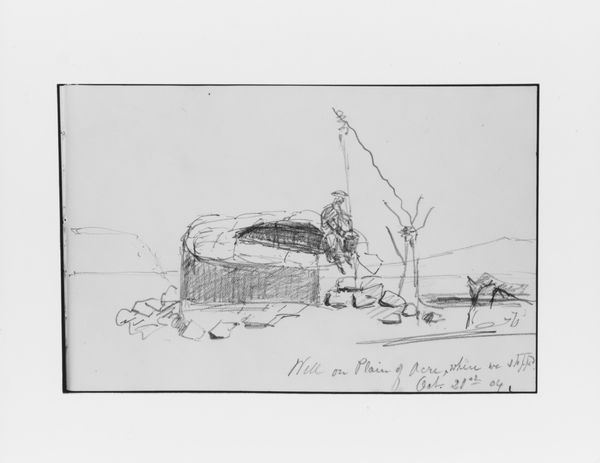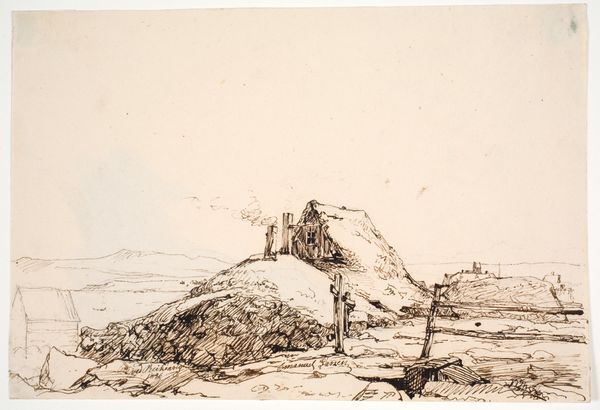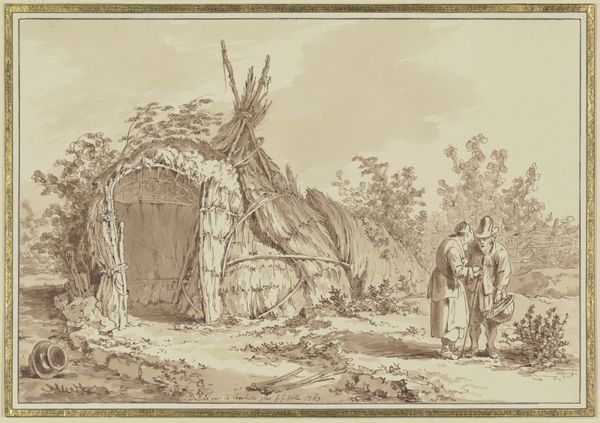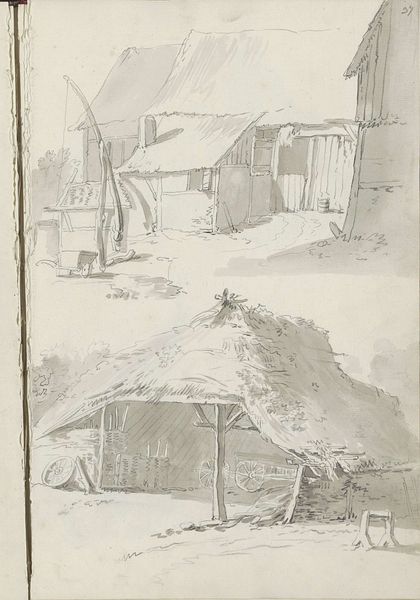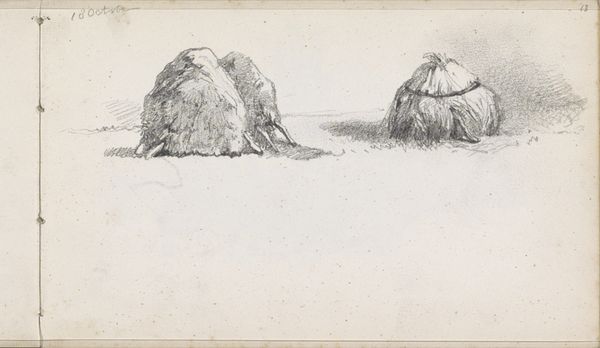
drawing, paper, pencil, graphite
#
drawing
#
pencil sketch
#
landscape
#
paper
#
pencil
#
graphite
Copyright: Public domain
Paul Kane’s pencil sketch, "Lake Huron," captures a scene dominated by conical forms. These are the dwellings of the people who live there. Note how Kane's use of graphite creates a stark contrast between the dark, textured surfaces of the tents and the open, airy sky. This contrast is a key element in understanding Kane's perception of space and form. The composition is structured around these contrasting elements. The clustered tents provide a sense of mass and volume, while the sketch-like quality of the lines suggests a fluidity and transience. This duality reflects a broader discourse around the representation of indigenous life. The tents may appear stable, yet the delicate linework and shading suggest they are fleeting and ephemeral. The artwork's value lies not merely in its representation of a scene, but in its ability to engage with ideas of space, form, and representation. It encourages us to question what is shown and how it is perceived, acknowledging that an image can hold both descriptive and conceptual significance.
Comments
No comments
Be the first to comment and join the conversation on the ultimate creative platform.
